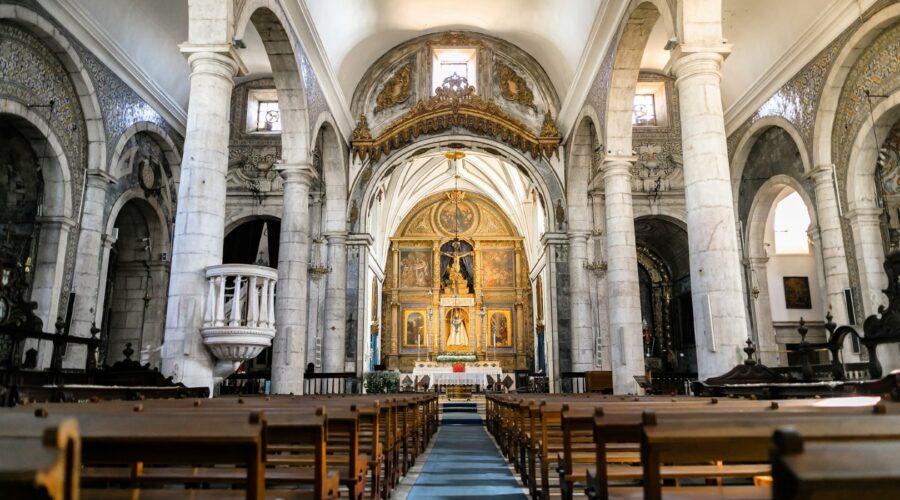Your cart is currently empty!
Unveiling the Splendors of the Sacré-Cœur Basilica: A Comprehensive Guide

Introduction
Nestled atop the bohemian heights of Montmartre, the Sacré-Cœur Basilica stands as a majestic symbol of the City of Lights, drawing millions of visitors each year. This magnificent edifice not only captivates with its architectural grandeur but also holds a profound spiritual significance in the heart of Paris.
History and Architecture
Conception and Construction
The Sacré-Cœur’s conception was sparked by a vow made during the Franco-Prussian War. In 1870, a group of devout Parisians promised to erect a church dedicated to the Sacred Heart of Jesus if the city was spared from invasion. After the war’s end, the construction of the basilica commenced in 1875 and spanned nearly 40 years.
Architectural Style
The basilica’s unique architectural style is an eclectic blend of Romanesque Revival, Byzantine Revival, and Art Deco influences. The white limestone facade, adorned with intricate carvings and mosaics, creates a striking contrast against the blue Parisian sky. The massive central dome, reaching a height of 83 meters, dominates the skyline and serves as a prominent landmark.
Interior Features
Nave and Apse
Stepping inside the Sacré-Cœur, visitors are greeted by an awe-inspiring nave. Towering stained glass windows depict scenes from the life of Christ, flooding the interior with vibrant hues. The apse, behind the main altar, is adorned with a spectacular mosaic depicting Christ’s Sacred Heart.
Mosaics and Frescoes
The basilica is renowned for its exquisite mosaics and frescoes. The largest mosaic, covering the entirety of the apse, was created by Luc-Olivier Merson and depicts Christ’s mission to Redeem humanity. Other notable mosaics depict the Passion, Resurrection, and Ascension of Christ.
Crypt
Beneath the main basilica lies a vast crypt. It houses the remains of Marius-Victor Guillon, the architect who dedicated his life to the construction of the Sacré-Cœur, as well as other notable figures associated with the church.
Pilgrimage and Worship
Sacred Heart Devotion
The Sacré-Cœur has become a prominent pilgrimage site for Catholics worldwide. Pilgrims come to venerate the relics of Saint Margaret Mary Alacoque, who promoted devotion to the Sacred Heart. The basilica also hosts regular masses, prayer services, and confessions.
Blessing of Paris
Every evening, the Sacré-Cœur’s bells ring out to bless Paris. This tradition began in 1885 and has continued ever since, symbolizing the basilica’s role as a spiritual protector of the city.
Visitor Information
Admission and Hours
The Sacré-Cœur is open to visitors daily, with free admission to the basilica. Guided tours are available for a fee.
Transportation
The basilica is accessible by metro (Lines 2 and 12) or by bus (Lines 30, 31, 54, and 80).
Nearby Attractions
The Sacré-Cœur is situated in the vibrant neighborhood of Montmartre. Visitors can explore the streets, browse local markets, and visit other landmarks such as the Musée de Montmartre and the Lapin Agile cabaret.
Tips for Visiting
* Arrive early to avoid crowds, especially during peak tourist season.
* Dress respectfully, as the basilica is a place of worship.
* Take time to admire the intricate details of the architecture and artwork.
* Stay for the evening blessing of Paris for a truly atmospheric experience.
* Consider visiting the crypt to learn more about the history of the basilica and its architects.
Conclusion
The Sacré-Cœur Basilica stands as a testament to the faith and devotion of the Parisian people. Its architectural splendor, inspiring mosaics, and pilgrimage significance make it an unmissable destination for visitors seeking spiritual and artistic enrichment. By exploring the depths of this magnificent edifice, one can gain a deeper understanding of Paris’s rich history and cultural legacy.